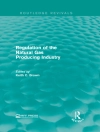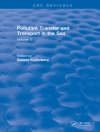Flows of the Columbia River, although modified substantially during the twentieth century, still vary considerably between seasons and between years. Lowest flows tend to occur during summer months when demand for irrigation water is at its highest and when water temperatures are greatest. These periods of low flows, high demand, and high temperature are critical periods for juvenile salmon migrating downstream through the Columbia River hydropower system. Although impacts on salmon of any individual water withdrawal may be small, the cumulative effects of numerous withdrawals will affect Columbia River flows and would pose increased risks to salmon survival. The body of scientific knowledge explaining salmon migratory behavior and physiology is substantial, but imperfect, and decision makers should acknowledge this and be willing to take action in the face of uncertainties. In order to provide a more comprehensive water permitting process, the State of Washington, Canada, other basin states, and tribal groups should establish a basin-wide forum to consider future water withdrawal application permits. If the State of Washington issues additional permits for water withdrawals from the Columbia River, those permits should contain provisions that allow withdrawals to be curtailed during critical high-demand periods.
Board on Environmental Studies and Toxicology & Division on Earth and Life Studies
Managing the Columbia River [PDF ebook]
Instream Flows, Water Withdrawals, and Salmon Survival
Managing the Columbia River [PDF ebook]
Instream Flows, Water Withdrawals, and Salmon Survival
قم بشراء هذا الكتاب الإلكتروني واحصل على كتاب آخر مجانًا!
لغة الإنجليزية ● شكل PDF ● صفحات 260 ● ISBN 9780309530378 ● الناشر National Academies Press ● نشرت 2004 ● للتحميل 3 مرات ● دقة EUR ● هوية شخصية 7146544 ● حماية النسخ Adobe DRM
يتطلب قارئ الكتاب الاليكتروني قادرة DRM












